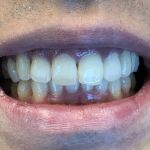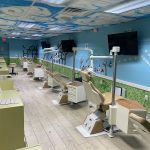Choosing the Right Orthodontic Appliance for Your Needs
- 1. Types of Orthodontic Appliances
- 2. Factors to Consider When Choosing an Orthodontic Appliance
- 3. Personalized Care and Treatment Plans
- 4. Real-Life Case Studies
- 5. How to Get Started with Your Orthodontic Journey
1. Types of Orthodontic Appliances
Orthodontic appliances are designed to straighten teeth, improve bite, and enhance oral health. There are various types of orthodontic appliances available, each serving a unique purpose. Some of the most common options include:
- Braces: Traditional metal braces are the most common type of appliance. They use brackets and wires to gradually shift the teeth into alignment.
- Clear Aligners: Popular among adults, clear aligners are removable and virtually invisible, offering a discreet alternative to traditional braces.
- Palatal Expanders: These appliances are used to widen the upper jaw, typically for patients with a narrow or crowded mouth.
- Retainers: Retainers are used after the braces come off to maintain the new position of the teeth and prevent them from shifting back.
2. Factors to Consider When Choosing an Orthodontic Appliance
Choosing the right orthodontic appliance involves considering several key factors that can influence the success of your treatment. Here are the most important aspects to think about:
- Aesthetic Preference: If you prefer a less noticeable appliance, clear aligners or ceramic braces may be ideal. These options are more discreet compared to traditional metal braces.
- Age and Lifestyle: The choice of appliance may depend on the patient's age, lifestyle, and commitment to wearing the appliance as directed. Teens often opt for traditional braces, while adults may prefer clear aligners for their convenience.
- Complexity of Treatment: Some orthodontic issues require more intensive treatment. For example, if you have severe bite problems or a misaligned jaw, you may need a more complex appliance, such as a palatal expander or headgear.
- Cost and Insurance: The cost of orthodontic appliances can vary significantly. It's important to consider your budget and check with your insurance provider to see what is covered.
3. Personalized Care and Treatment Plans
Each patient's orthodontic journey is unique, and so is their treatment plan. Working closely with your orthodontist will ensure that you get a personalized approach to address your specific needs. A thorough consultation is the first step to identifying the most suitable appliance for your dental health goals. Your orthodontist will take X-rays, photographs, and impressions of your teeth to create a customized treatment plan that aligns with your expectations and timeline.
For instance, if you’re seeking quicker results and have a mild misalignment, clear aligners may be the best solution. On the other hand, traditional braces might be recommended if you require more extensive correction over a longer period.
4. Real-Life Case Studies
Take a look at some real-life case studies where patients shared their experiences in choosing the right orthodontic appliance:
Case 1: Sarah, a 32-year-old professional, was looking for an orthodontic solution that wouldn’t affect her appearance during business meetings. After consulting with her orthodontist, she chose clear aligners. With the ability to remove them during meals and for professional photos, Sarah was happy with the results after 18 months.
Case 2: John, a 15-year-old teenager, had severe overcrowding of his teeth. His orthodontist recommended traditional metal braces to effectively shift his teeth into place. Although John was initially concerned about the appearance, he quickly adapted, and after two years, his smile had transformed completely.
5. How to Get Started with Your Orthodontic Journey
Choosing the right orthodontic appliance is an important decision, but it all starts with the first step: scheduling a consultation with a qualified orthodontist. At Dentistry Toothtruth, we offer personalized orthodontic consultations to help you determine the best appliance for your needs. Whether you’re looking for traditional braces or modern clear aligners, our team is here to guide you every step of the way.
Don't wait any longer to achieve the smile you've always dreamed of. Click here to schedule your consultation today!







 Southill Dental Group5.0 (364 review)
Southill Dental Group5.0 (364 review) Foothill Smiles5.0 (264 review)
Foothill Smiles5.0 (264 review) Tom Hoff DDS4.0 (26 review)
Tom Hoff DDS4.0 (26 review) All Smiles Dental Group4.0 (64 review)
All Smiles Dental Group4.0 (64 review) Premier Dental Center4.0 (324 review)
Premier Dental Center4.0 (324 review) Loretto Multi-Specialty Dental Center4.0 (111 review)
Loretto Multi-Specialty Dental Center4.0 (111 review) The Importance of Oral Health Education During Pregnancy for a Healthy Pregnancy
The Importance of Oral Health Education During Pregnancy for a Healthy Pregnancy Best Tips for Brushing Your Teeth Properly for Healthy Gums: Essential Techniques for Oral Health
Best Tips for Brushing Your Teeth Properly for Healthy Gums: Essential Techniques for Oral Health Why Skipping Dental Checkups Can Lead to Bigger Oral Health Problems
Why Skipping Dental Checkups Can Lead to Bigger Oral Health Problems Advantages of Porcelain Dental Restorations
Advantages of Porcelain Dental Restorations How Can Diabetes Cause Tooth and Gum Problems? Preventing and Managing Oral Health Issues
How Can Diabetes Cause Tooth and Gum Problems? Preventing and Managing Oral Health Issues Healthy Habits for Promoting Good Oral Health and Hygiene: Tips for a Healthy Smile
Healthy Habits for Promoting Good Oral Health and Hygiene: Tips for a Healthy Smile